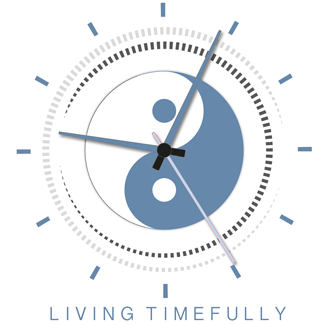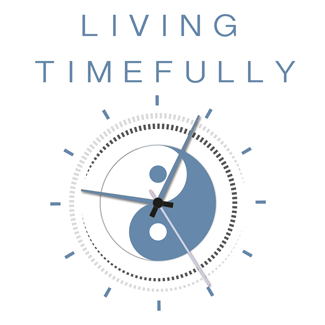by Tom Evans | Jan 26, 2015 | Timing
 In the UK at least, as the 31st of January looms quite a few hearts pounding as personal tax returns have to be submitted. It’s thought that nearly 10 million people in the UK must submit a self-assessment return each year. Filing a return late and you’ll get an immediate £100 fine.
In the UK at least, as the 31st of January looms quite a few hearts pounding as personal tax returns have to be submitted. It’s thought that nearly 10 million people in the UK must submit a self-assessment return each year. Filing a return late and you’ll get an immediate £100 fine.
Just imagine though if you could learn to get more done in less time and that you could generate enough hours in the day.
Well bizarre as it may seem, our left and right brains experience time in different ways. It’s an urban myth that the left brain is logical and the right is creative. The picture that is now emerging is that our left brains sit inside space and time and our right brains experience everywhere and ‘everywhen’ else.
If you have to make the numbers add up by the end of the week, take a few minutes out just now to take your left and right brains on a workout. Follow these simple numerical exercises and, at the end of this Timeful Task, you will have both sides of the brain working in harmony.
Your relationship with numbers will change slightly, especially with the number 9. You will also find your experience of the passage of time will subtly alter and remember of course that it’s the thought that ‘counts’.
This short video is a sample from over 6 hours of mind opening multimedia resources in the Living Timefully self study program.
To find out more about how we can change our perception of the passage of time and how we can create as much time as we need, start Living Timefully

p.s. the best time to start Living Timefully is yesterday, the second best time is today
by Tom Evans | Jan 9, 2015 | Timing
Would you like to get more done in 2015 than 2014? Here’s how timefulness is becoming the new mindfulness and slowing down is the new speeding up.

Key 1: Meditate daily
It is thought that every minute spent in the meditative state, gets added back to our lives. We either save any time spent by having a better day or add a minute to our longevity. When we learn to enter the meditative state with our eyes open, time bends and stretches so we get more done in less time.

Key 2: Make a date with your Creative Self
Each and every day, even if it’s just for 10 minutes, a date with our Creative Self is like a supercharge for the mind, body and soul. We might write ‘morning pages’, pick up a guitar and strum or visit an art gallery. Just going for a walk in the park and imagining the most amazing future counts too.

Key 3: Trust your gut & follow your heart
Our head ‘shouts’ quite loudly. So much so that sometimes the signals from our gut and heart get overlooked and overruled. So, for each decision you have to make, ask your gut for a Yes or a No. Next ask your heart if it is cold, luke warm or boiling hot about it. If your gut and heart give you the green light, proceed with gusto. If not, ask them what would have to change in order to get their blessing.

Key 4: Create a To Love List
It’s said when we love the work we do, we never work as such again. So ditch your To Do list and start a To Love list. At the top, put the thungs you love to do first and tackle your list from the top down. If there are things on there you don’t like doing so much, either outsource them or be creative about how you could love doing them.

Key 5: Sync with natural time
Our modern calendar has caused us to fall out of sync with natural time. Our creativity waxes and wanes wity the seasons, the phase of the Moon and the hours in each day. When we discover our naturally creative times, we go with the flow and stop pushing water up a temporal hill.

Key 6: Be thankful
At the end of each day, either in a journal or just in your head as it hits the pillow, reflect on the highlights of your day. As you drop off into slumber, say one last ‘Thank You’ for the day to your bed for giving you a good night’s sleep.

Key 7: Perform a Random Act of Kindness
When we get into the habit of performing a random of kindness to a stranger each day, something rather magical happens. Other people, who weren’t aware of our act or the recipient of our act, perform similar kindnesses to us. The ratio of kindnesses is more than two bestowed back on us for everyone we give out. The result is massive time saving.

Visit www.livingtimefully.com to start creating as much time as you need
by Tom Evans | Dec 31, 2014 | Expanding
Before I was introduced to meditation, I thought it was a complete waste of time and that there was no way my mind could go blank.
These days, I know I have a worse day without it and I find myself teaching it to others, both through online MP3’s and in mindfulness sessions.
This short video explains what I learned.
by Tom Evans | Oct 29, 2014 | Timing

I woke up one morning last week with an idea. I realised that my Living Timefully Self Study programme could really benefit those facing life threatening conditions.
Less than a week later, that idea has been realised. It is now available completely free of charge to anyone with a terminal illness – and people have signed up already and reported some amazing benefits.
I’ve mentioned it to a few people and perhaps quite rightly they asked some questions of me, I thought my answers back were worth collating and sharing by way of this blog.
Q1 : Why would someone who is ill want to spend any of their precious time taking a time management course?
Living Timefully is unlike most time management programmes. It explores how we perceive time and how we can alter the speed of its passage. So, some people might want the clock to go quicker and some might want to slow it down. People who take the course will learn how to do both and take time under their control.
Q2 : Does the course help with the healing process?
When I developed the course, I did not have healing in mind. Yet people who have taken it report it’s made them less stressed and even cleared up headaches. As the course contains over four hours of meditations and visualisations, this perhaps is no surprise. It is well accepted now that meditation improves well being and increases vitality. So while the programme is not designed to heal per se, it will aid and assist with any conventional or alternative treatments being taken.
Q3 : What does someone need to take the course?
The course can be taken on any device with han Internet connection, like a laptop, tablet or smartphone. The exercises are best done with earphones on and for some you will need pen and paper. It even contains a guide on how to create Bucket Lists. Each week, over a 10 week period, an email will be sent to give access to the next set of ‘Timeful Tasks’ to complete. An hour or so of time a week is all that’s needed. This gift is a gift for lifetime so all modules will be accessible when needed should events mean a week gets missed out.
Q4 : Why are you giving it away free? What’s the catch?
Because I can and there is no catch. I want to give something back for all the blessings I have had bestowed on me. People who sign up will not be upsold to or encouraged to opt in to any sales schemes or scams. I take data privacy very seriously and the names of people on the programme will not be shared with any third parties. If people do benefit from the course and want to share their experience, I would appreciate testimonials but will use them anonymously.
Q5 : How you get proof or check that people are suffering from a life-threatening illness?
When people request access to the course, they won’t get instant access. I ask them to share a little about their condition. I will only block obvious scammers and spammers. Also, I have ways to ‘tune in’ and tell if people are genuine – the clues to how I do this are in Weeks 5 & 7 of the course.
Q7 : What if I have a question not addressed here?
Just add your question by way of comment below …
by Tom Evans | Oct 7, 2014 | Timing
 Biologists have a pretty good handle on the purpose and function of the breath. On the in breath, we take oxygen on board and on the out breath, we expel toxic carbon dioxide. If our lungs are clogged, our airways are blocked or our air supply removed, it doesn’t bode well for us. Breathing is essential to life.
Biologists have a pretty good handle on the purpose and function of the breath. On the in breath, we take oxygen on board and on the out breath, we expel toxic carbon dioxide. If our lungs are clogged, our airways are blocked or our air supply removed, it doesn’t bode well for us. Breathing is essential to life.
The breath though has some other more subtle, yet vital roles which are not generally recognised.
1. Powering Inspiration
Most people speak on the out breath (apart from some Icelandic people and some flautists I discovered).
Try and speak on an in breath to find out what I mean.
Our language, as always, gives somewhat obvious clues as to what is really going on. When we speak we voice our ’aspirations’. The in breath is of course the ’in-spiration’ phase of the whole re-spiration process. It is this ’in-breathing’ process that fires up our imagination and brings in ideas.
So if you find yourself stuck for inspiration, just close your eyes, breathe slowly and rhythmically for a couple of minutes. If you then pay attention to the still point between the in and out breath, the solution to your problem will just pop in ’out of nowhere’.
This works equally well if you go out for a walk (with your eyes open though).
2. Aiding creativity
Our neurons don’t store any oxygen so we need our breath just to think. As our brain uses 20-25% of our body’s energy, this is why it shuts down when we faint to protect our other vital organs.
So if you are starting a creative task, here’s a quick and simple way to give yourself an extra boost.
Close your right nostril with your right index finger and breathe in and out of your left nostril five times. You can do this at whatever speed feels right for you. This has the effect of oxygenating the right brain. Then use your left index finger to close your left nostril and oxygenate your left hemisphere by breathing through your right nostril five times. Repeat as necessary.
3. Controlling our Perception of Time
Time is not as fixed as is normally thought. It is both malleable and stretchable and affected by the speed of our consciousness.
By changing the speed of our breath, we can alter the perceived passage of time. It’s as simple as this. The faster we breathe, the faster time seems to pass. Slow your breath down and time elongates.
So it is just possible by controlling the speed of our breath, we can not only live longer but get more done in the time we do have on this special planet.
__________________________________________
Related Links
Slowing Down to Speed Up
Living Timefully
 In the UK at least, as the 31st of January looms quite a few hearts pounding as personal tax returns have to be submitted. It’s thought that nearly 10 million people in the UK must submit a self-assessment return each year. Filing a return late and you’ll get an immediate £100 fine.
In the UK at least, as the 31st of January looms quite a few hearts pounding as personal tax returns have to be submitted. It’s thought that nearly 10 million people in the UK must submit a self-assessment return each year. Filing a return late and you’ll get an immediate £100 fine.
 In the UK at least, as the 31st of January looms quite a few hearts pounding as personal tax returns have to be submitted. It’s thought that nearly 10 million people in the UK must submit a self-assessment return each year. Filing a return late and you’ll get an immediate £100 fine.
In the UK at least, as the 31st of January looms quite a few hearts pounding as personal tax returns have to be submitted. It’s thought that nearly 10 million people in the UK must submit a self-assessment return each year. Filing a return late and you’ll get an immediate £100 fine.


 Biologists have a pretty good handle on the purpose and function of the breath. On the in breath, we take oxygen on board and on the out breath, we expel toxic carbon dioxide. If our lungs are clogged, our airways are blocked or our air supply removed, it doesn’t bode well for us. Breathing is essential to life.
Biologists have a pretty good handle on the purpose and function of the breath. On the in breath, we take oxygen on board and on the out breath, we expel toxic carbon dioxide. If our lungs are clogged, our airways are blocked or our air supply removed, it doesn’t bode well for us. Breathing is essential to life.